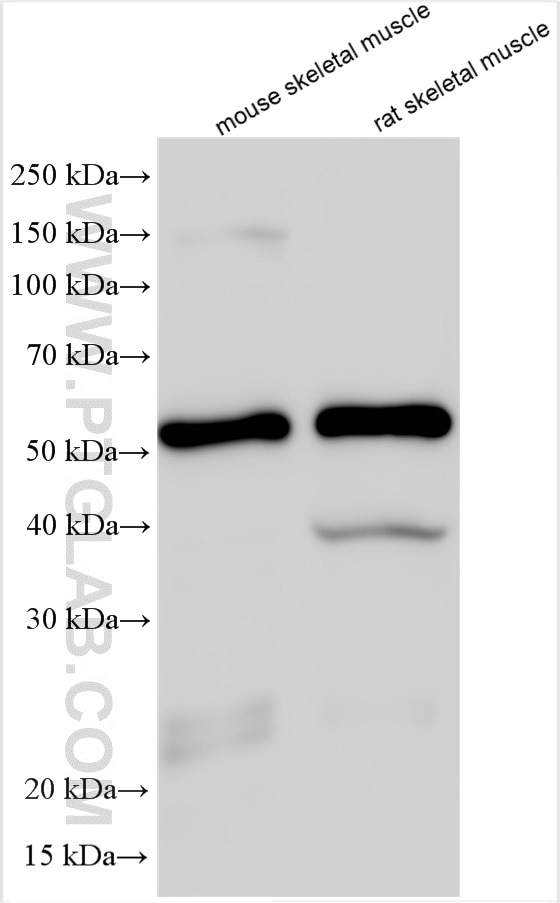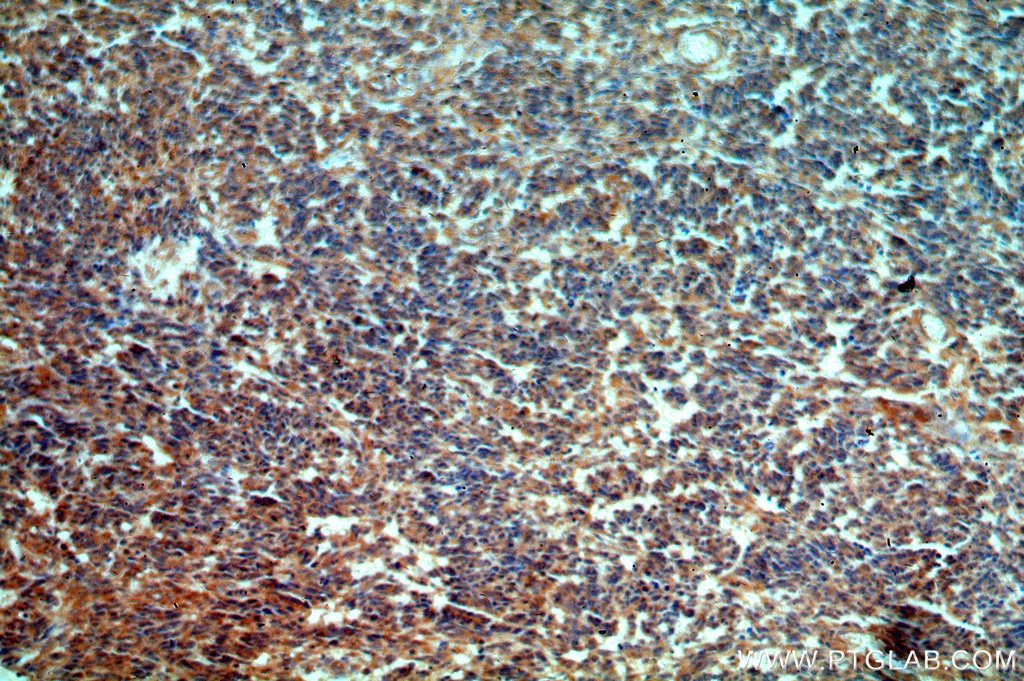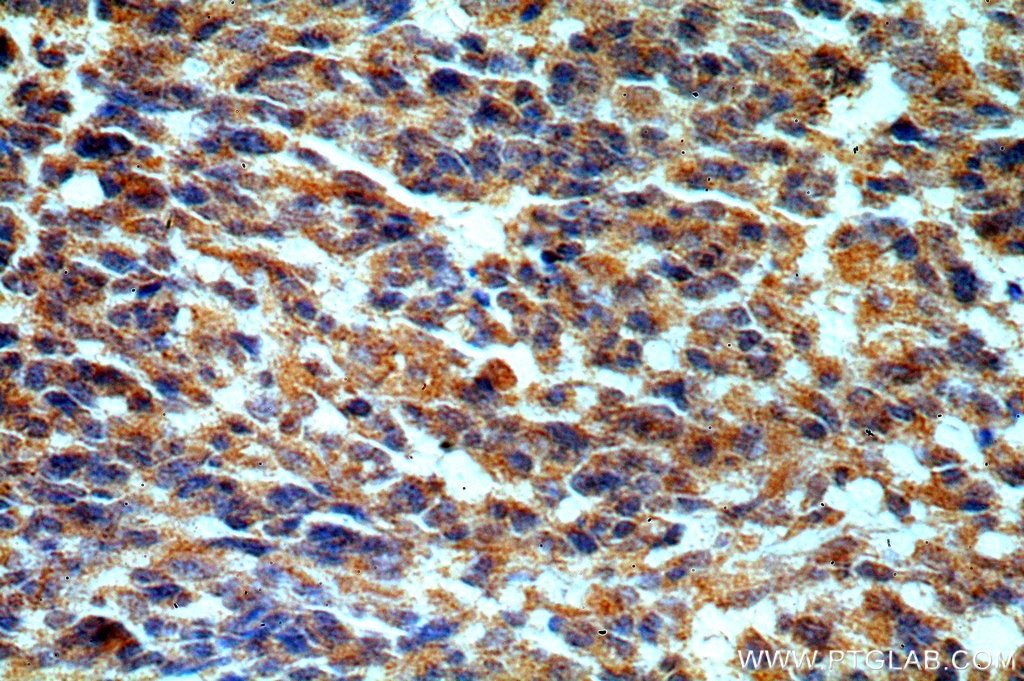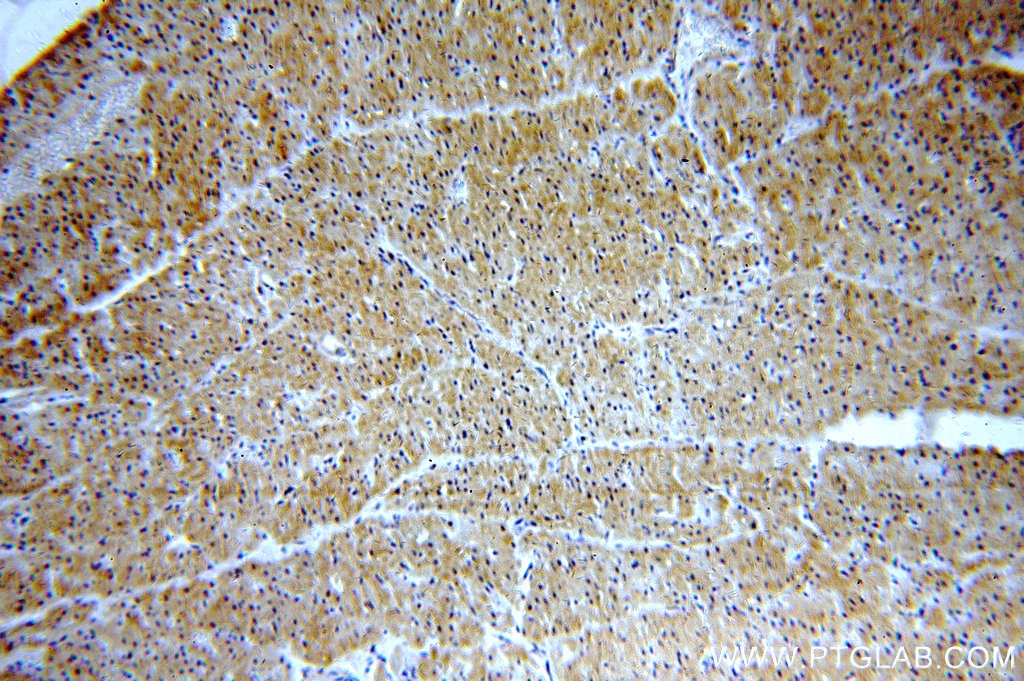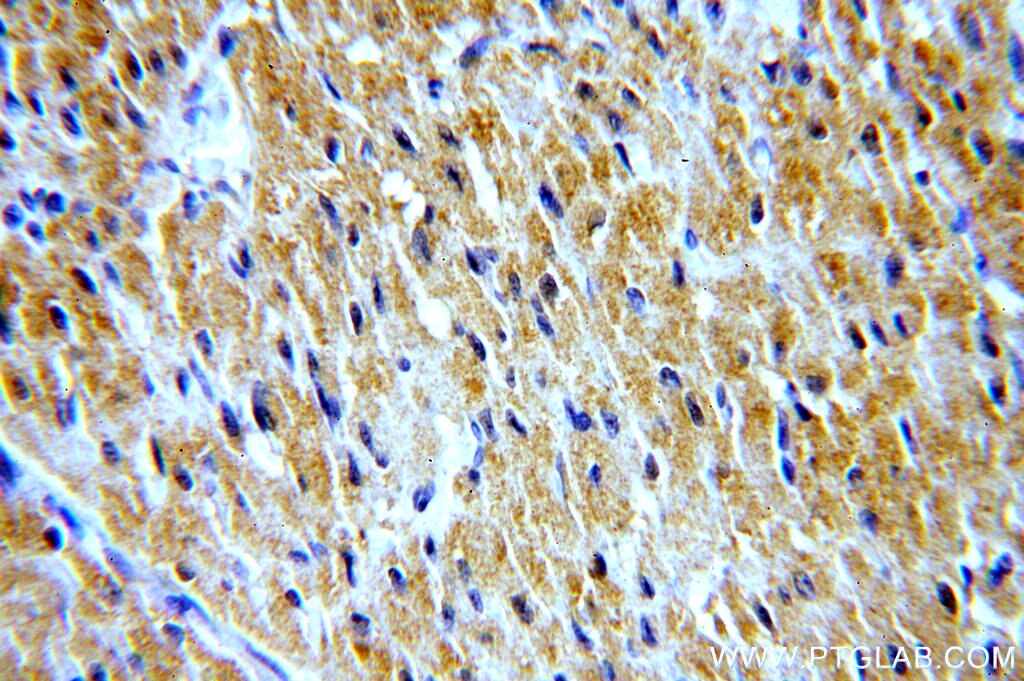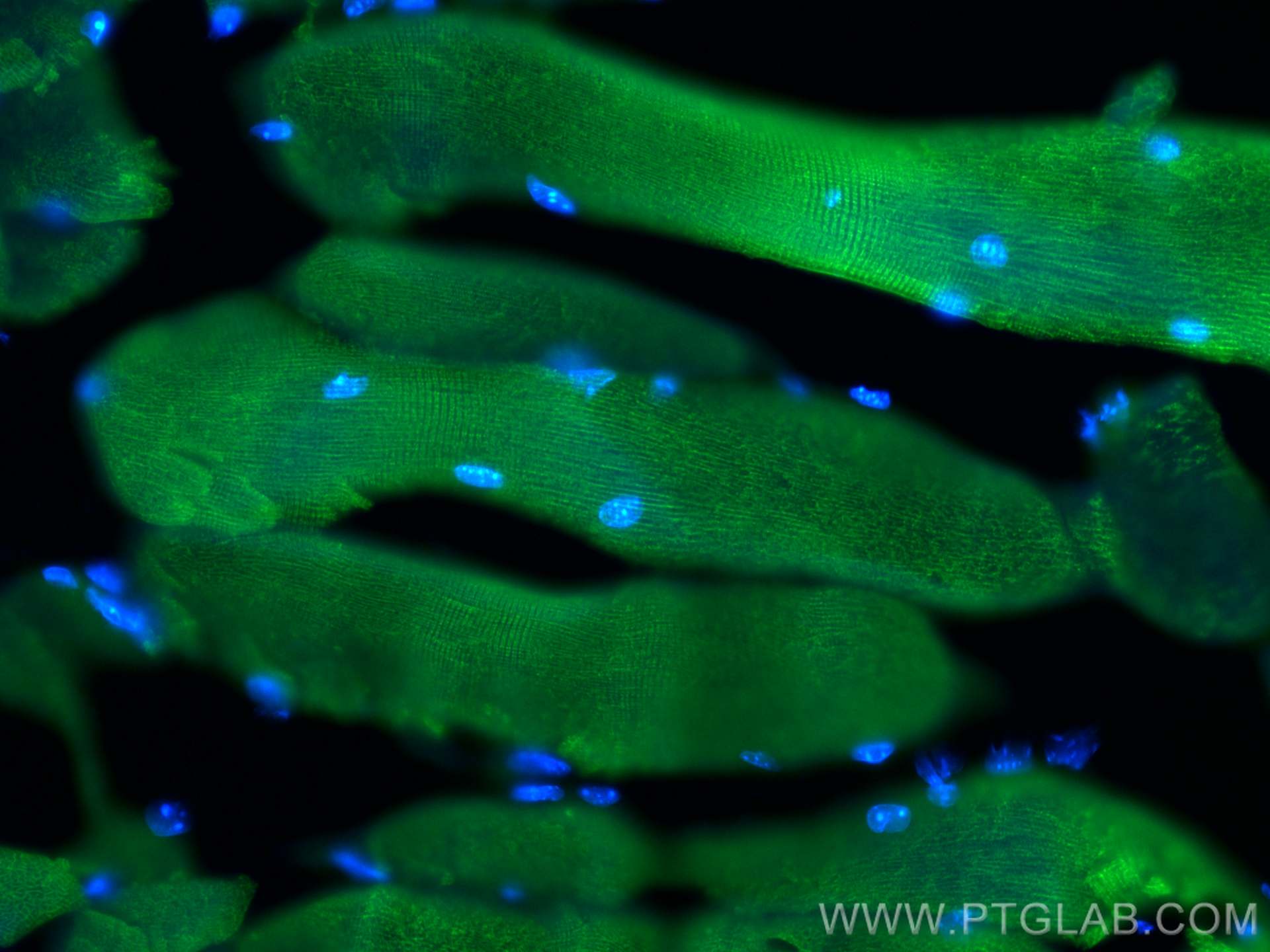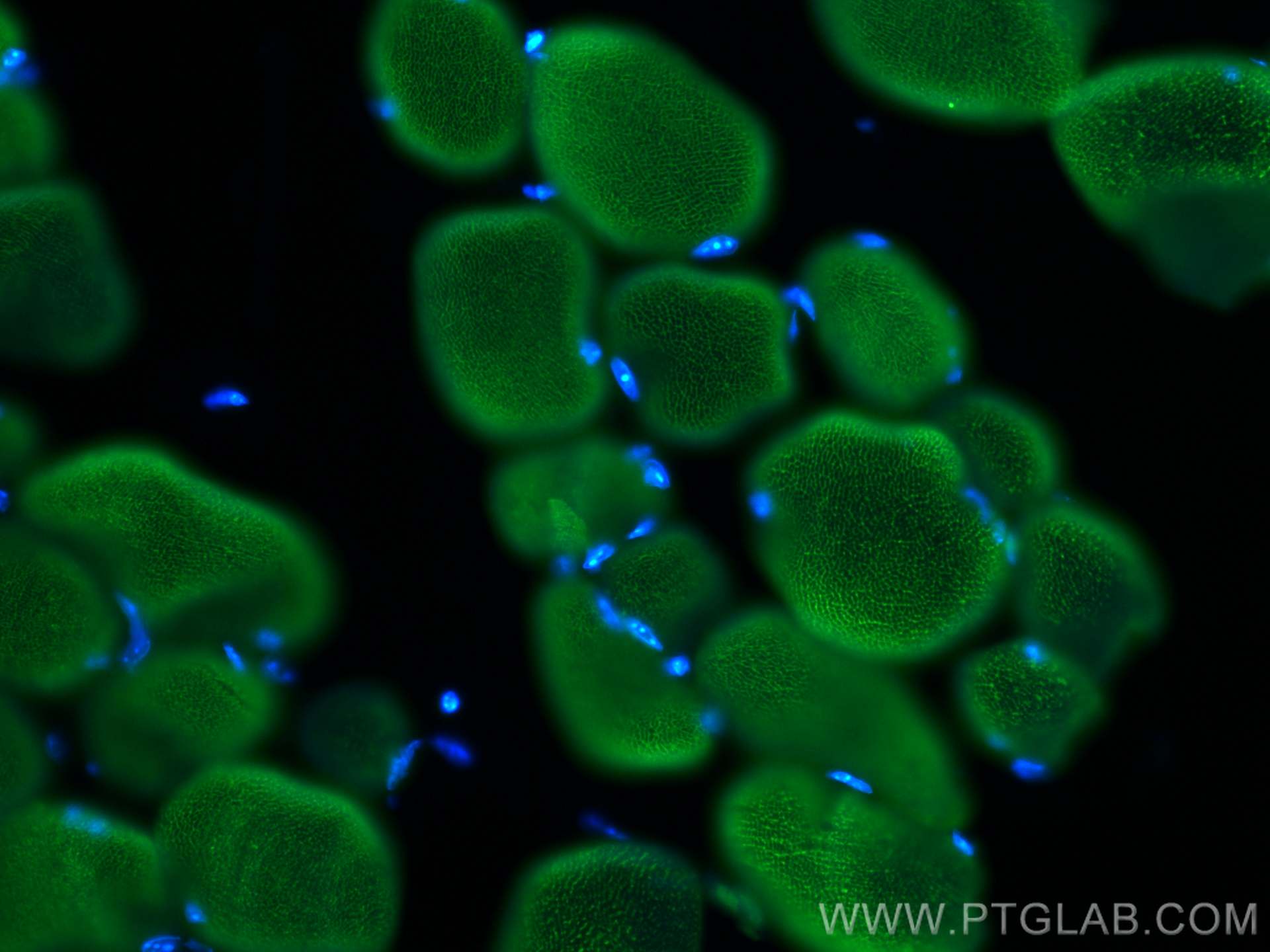- Featured Product
- KD/KO Validated
STAC3 Polyclonal antibody
STAC3 Polyclonal Antibody for WB, IF, IHC, ELISA
Host / Isotype
Rabbit / IgG
Reactivity
human, mouse, rat
Applications
WB, IF, IHC, CoIP, ELISA
Conjugate
Unconjugated
Cat no : 20392-1-AP
Synonyms
Validation Data Gallery
Tested Applications
| Positive WB detected in | mouse skeletal muscle tissue, rat skeletal muscle tissue |
| Positive IHC detected in | human gliomas tissue, human heart tissue Note: suggested antigen retrieval with TE buffer pH 9.0; (*) Alternatively, antigen retrieval may be performed with citrate buffer pH 6.0 |
| Positive IF detected in | mouse skeletal muscle tissue |
Recommended dilution
| Application | Dilution |
|---|---|
| Western Blot (WB) | WB : 1:2000-1:14000 |
| Immunohistochemistry (IHC) | IHC : 1:20-1:200 |
| Immunofluorescence (IF) | IF : 1:50-1:500 |
| It is recommended that this reagent should be titrated in each testing system to obtain optimal results. | |
| Sample-dependent, Check data in validation data gallery. | |
Published Applications
| KD/KO | See 2 publications below |
| WB | See 7 publications below |
| IF | See 1 publications below |
| CoIP | See 1 publications below |
Product Information
20392-1-AP targets STAC3 in WB, IF, IHC, CoIP, ELISA applications and shows reactivity with human, mouse, rat samples.
| Tested Reactivity | human, mouse, rat |
| Cited Reactivity | human, mouse, rat |
| Host / Isotype | Rabbit / IgG |
| Class | Polyclonal |
| Type | Antibody |
| Immunogen | STAC3 fusion protein Ag14232 |
| Full Name | SH3 and cysteine rich domain 3 |
| Calculated Molecular Weight | 364 aa, 42 kDa |
| Observed Molecular Weight | 42-55 kDa |
| GenBank Accession Number | BC008069 |
| Gene Symbol | STAC3 |
| Gene ID (NCBI) | 246329 |
| RRID | AB_10693618 |
| Conjugate | Unconjugated |
| Form | Liquid |
| Purification Method | Antigen affinity purification |
| Storage Buffer | PBS with 0.02% sodium azide and 50% glycerol pH 7.3. |
| Storage Conditions | Store at -20°C. Stable for one year after shipment. Aliquoting is unnecessary for -20oC storage. 20ul sizes contain 0.1% BSA. |
Protocols
| Product Specific Protocols | |
|---|---|
| WB protocol for STAC3 antibody 20392-1-AP | Download protocol |
| IHC protocol for STAC3 antibody 20392-1-AP | Download protocol |
| IF protocol for STAC3 antibody 20392-1-AP | Download protocol |
| Standard Protocols | |
|---|---|
| Click here to view our Standard Protocols |
Publications
| Species | Application | Title |
|---|---|---|
Hum Mutat STAC3 variants cause a congenital myopathy with distinctive dysmorphic features and malignant hyperthermia susceptibility. | ||
Structure Multiple Sequence Variants in STAC3 Affect Interactions with CaV1.1 and Excitation-Contraction Coupling.
| ||
Skelet Muscle The SH3 and cysteine-rich domain 3 (Stac3) gene is important to growth, fiber composition, and calcium release from the sarcoplasmic reticulum in postnatal skeletal muscle.
| ||
J Cell Physiol STAC3 incorporation into skeletal muscle triads occurs independent of the dihydropyridine receptor. | ||
J Gen Physiol Calcium current modulation by the γ1 subunit depends on alternative splicing of CaV1.1. | ||
J Appl Physiol (1985) Preconditioning contractions prevent prolonged force depression and Ca2+-dependent proteolysis of STAC3 after damaging eccentric contractions. |
